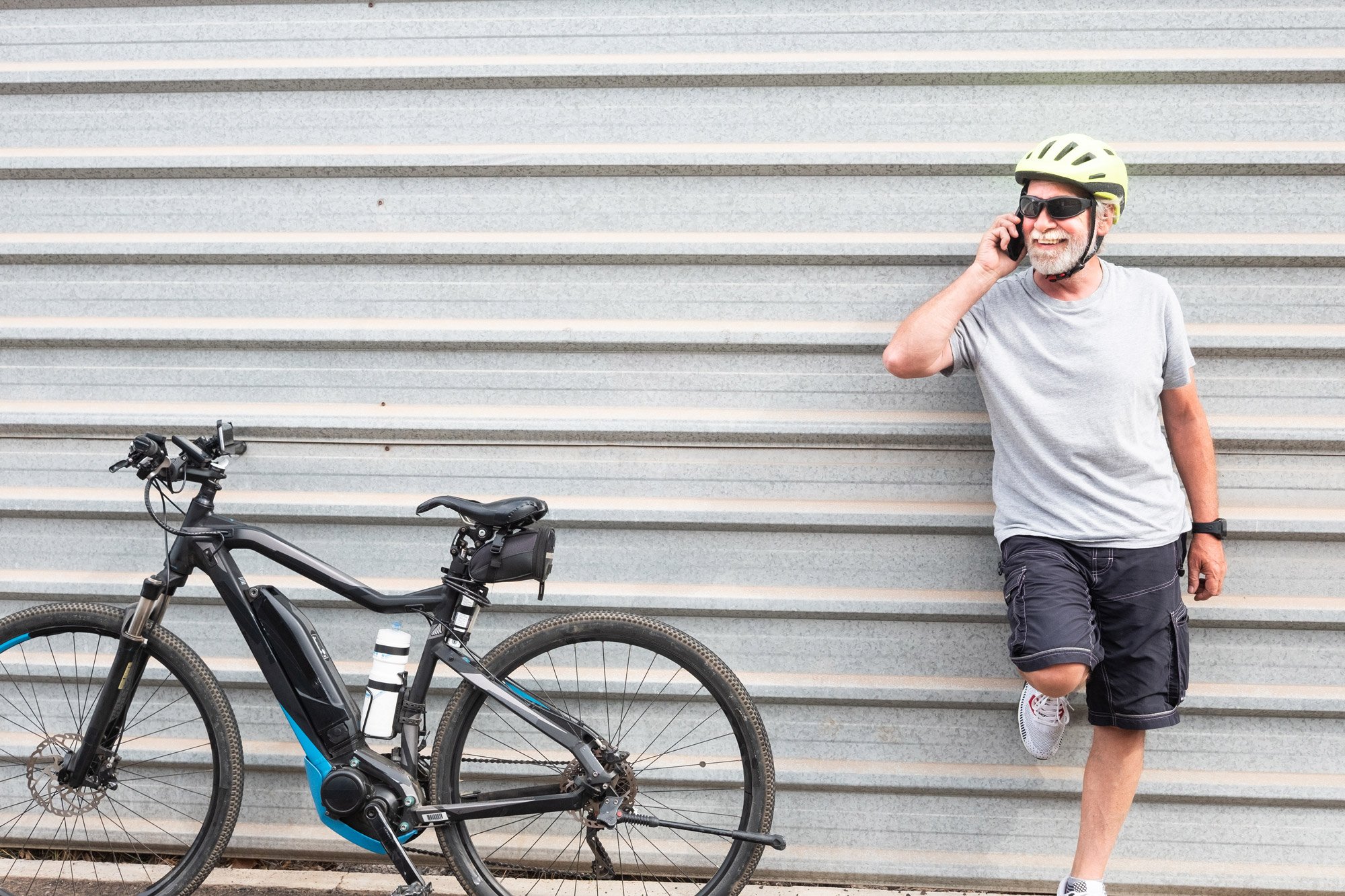
Resources.
Guest Column: E-bikes should be allowed on trails
BY ERICH RYLL | BEND BULLETIN
Jerry Marcyk’s guest article, “Snobbery on the local bike trails” on May 10 was spot on! I am two years his senior, and being a septuagenarian a ‘pedal-assisted’ e-bike would be very helpful. I have pulmonary insufficiency peddling uphill on single-track trails, and assisted pedaling would help me overcome shortness of breath which often have me off my mountain bike and walking it up hills. Keep in mind Jerry’s mention that that assisted pedaling e-bikes have no throttle, but only help when the bicyclist pedals the bike to get the assistance.
The Health Benefits of Riding an Electric Bike for Senior Riders
BY IGOR KARNI | EASY E-BIKING
While it is no secret that there are many health benefits to riding an e-bike, the question becomes more layered when specifically considering senior riders.
With age, there generally tends to be more age-related health conditions and issues that come up – decreased mobility, higher risk of illness, and deteriorating cognitive and motor functions are all issues that need to be treated seriously. Ultimately, the heightened risks that come with age do need to be considered before senior people determine which exercise routine is best for them.
The effect of cycling on cognitive function and well-being in older adults
BY LOUISE-ANN LEYLAND, ET AL | PLOS ONE
…E-bike participants also improved in processing speed (reaction times in go trials of the Stop-It task) after the intervention compared to non-cycling control participants. Finally, e-bike participants improved in their mental health score after the intervention compared to non-cycling controls as measured by the SF-36. This suggests that there may be an impact of exercising in the environment on executive function and mental health….
Why Older Riders May Get a Surprising Benefit From E-Bikes
SELENE YEAGER | BICYCLING
Our brain power dims as we get older, which also can darken our sense of well-being. Science supports two big ways to brighten both: outdoor stimulation and exercise.
Riding a bike delivers healthy doses of each of those brain boosters. And for adults over 50, e-bikes may offer an even better brain boost than traditional bikes, according to a new study published in PLOS One.
Summary Comments on Class-1 e-Bikes from the Tahoe National Forest Study
BY ERICH RYLL
Page 1-2, Designating single-track trails for Class-1 e-bikes: Make changes to the National Forest Transportation System (NFTS) including designating approximately 35.5 miles of existing non-motorized trails as open for Class 1 E-bikes, adding approximately 1.7 miles of existing unauthorized routes to the NFTS, converting 0.7 miles of road to trail, changing maintenance levels on approximately 3.7 miles of road, and decommissioning 9 road segments (approximately 5.3 miles). Alternative 1 will not significantly alter impacts to, public enjoyment of, or current patterns of use on four trails proposed for designation to allow access for Class 1 E-bike recreation.
-
Page 4, Finding of No Significant Impacts by allowing Class-1 e-bikes: After considering the environmental effects described in the EA, I have determined these actions will not have a significant effect on the quality of the human environment, considering the context and intensity of impacts (40 CFR 1508.27). Thus, an environmental impact statement will not be prepared. I base my finding on the following: Careful analysis and consideration of current patterns of mountain bike use along with comparative data relative to different user types, has led me to determine that designation of four currently non-motorized trails to allow for use by Class 1 E-bikes does not pose a significant increased risk to public health or safety.
Page 10, Comparison of speed by conventional MTBs vs. eMTBs: Tahoe National Forest collected comparative speed data on these trails in order to measure differences in average and top speeds between traditional mountain bikes and Class 1 E-bikes (Trail Reports, incorporated by reference in the final EA). Speeds were recorded for male and female riders of intermediate to advanced ability, on Class 1 E-bikes and traditional mountain bikes, across terrain that included uphill, downhill, and flat. Results showed similar average speeds between Class 1 E-bikes and traditional mountain bikes on downhill and flat sections of trail. Top speeds measuring 16-19 mph were recorded for both Class 1 E-bikes and traditional mountain bikes on flat open terrain. Top speeds on downhill sections, where riders generally do not pedal, were marginally slower, but again similar between Class 1 E-bikes and traditional mountain bikes. Class -1 E-bikes were able to achieve higher speeds on uphill trail segments ranging from 8 - 13 mph while traditional mountain bikes averaged 5 – 8 mph over the same uphill sections. While this difference is statistically significant, our analysis indicates it to be well within the range of differences in speed that can be observed between novice and expert riders. The slightly higher speeds recorded by Class 1 E-bikes on uphill sections of trail, based on a review of collected data, does not represent a significantly increased safety risk to other user groups relative to the current level of use by traditional mountain bikes.
Similarity of MTBs & eMTBs, Page 12: The Tahoe National Forest recognizes that pedal assist E-bikes are considered types of motorized vehicle. Our observations locally, informed by data from industry, user groups, and peer reviewed scientific literature have led us to conclude that Class 1 E-bikes and traditional mountain bikes are similar recreation activities in terms of their structure, components, versatility, health benefits (Hall et al. 2019), speeds (Langford et al.2015), impacts to trails (Wilson and Seney 1994) (IMBA 2015), and even the way they look (refer to Response to Comments 1A-3A).
Farther Travel by eMTBS, Page 13: We agree that Class 1 E-bikes will afford some users, who may not otherwise be able, the ability to travel further however, our analysis indicates that this will provide expanded access, distributing that use over more of the trails thereby reducing impacts to currently heavily trafficked sections of trail closer to existing trailheads and staging areas.
eMTBs will degrade trails, Page 18: Data collected by Tahoe National Forest staff, specific to the four selected trails proposed for designation to allow for use by Class 1 E-bikes, has been consistent with findings in the scientific literature. A comparison of relative speeds (refer to Trail Reports, incorporated by reference in the final EA) has led us to conclude that Class 1 E-bikes and traditional mountain bikes represent similar recreational uses. Our observations relative to trail impacts, associated to different user groups, including soil movement (displacement and/or erosion) and changes to trail tread surface, are consistent with a study implemented by the International Mountain Bicycling Association which found similar effects between Class 1 E-bikes and traditional mountain bikes (IMBA 2015). The majority of current use on the four trails proposed for designation to allow Class 1 E-bikes is by mountain bikers. Based on a review of our findings, Tahoe National Forest has determined that inclusion of Class 1 E-bikes as a designated, legitimate use on these trails does not constitute an increased adverse impact to their sustainability.
eMTB riders may not have the courtesy on the trails as conventional MTB riders, Page 20: Our review of current scientific literature found that a recent study concluded riders of E-bikes and regular bicycles exhibit similar safety behavior (Langford et al. 2015).
Benefits to the Class-1 riders, Page 21: Based on a review of findings, Tahoe National Forest considers Class 1 E-bikes and traditional mountain bikes to be similar modes of recreating (refer to Response to Comments 1A, 3A, 5A-8A, and 1G-3G). The Tahoe National Forest also recognizes that this course of action does have the potential to lead to positive outcomes, enabling many people, particularly the elderly and disabled, to enjoy the outdoors and associated health benefits (Federal Register vol. 85, #186, September 2020). This reasoning is consistent with our analysis, based on a review of current scientific literature, which has concluded that E-bikes give people who may not otherwise be able to bike (due to physical limitations or proximity to locations) the ability to overcome these challenges (MacArthur, Dill, and Person 2014). Finally, the proposal to allow Class 1 E-bikes on four selected trails currently open to traditional mountain bikes, meets a key element of the purpose and need relative to E-bikes (expansion of recreational opportunity) as described in the project documents (East Zone Connectivity and Restoration Project final EA).
Page 27: Tahoe National Forest recognizes the value benefit that Class 1 E-bikes can afford a significant segment of the population who might otherwise feel restricted from the enjoyment of recreating on public lands. The U.S. Forest Service showed a clear understanding of the issue in recently proposing changes to Travel Management policy, specifically pointing out that E-bikes enable many people, particularly the elderly and disabled, to enjoy the outdoors and associated health benefits (Federal Register vol. 85, #186, September 2020). This premise is confirmed based on reviews of current scientific literature which have concluded E-bikes give people who may not otherwise be able to bike (due to physical limitations or proximity to locations) the ability to overcome these challenges (MacArthur, Dill, and Person 2014). The Tahoe National Forest will continue to promote opportunities to recreate on National Forest System lands for all user groups.
The last comment that really puts the issue in perspective:
Class 1 eMTB - is defined as a low-speed pedal-assisted electric bicycle equipped with a motor that provides assistance only when the rider is pedaling, and that ceases to provide assistance when the bicycle reaches the speed of 20 miles per hour. By law, Class 1 ebike motors cannot exceed 750 watts. (This is approximately 1/2 the wattage of a typical hair dryer.)
Will you join our cause?
As cycling enthusiasts and residents of the Greater Bend Metro Area, our group advocates for access to all public bicycle trails for Class 1 e-bikes. We argue that because these bikes are pedal-assisted, they should not be considered ‘motorized vehicles’ as currently classified by the USFS. The BLM and National Park Service have both re-classified Class-1 eBikes as ‘non-motorized vehicles.’ It is time for the USFS to do the same.
